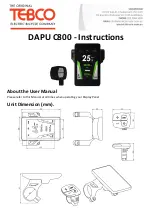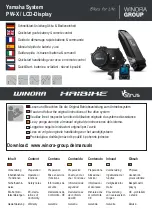
MY21B05 - 12_1.0_21.10.2020
54
Operation
9
Increase or reduce the air pressure until you
have reached the desired sag. If the sag is
correct, tighten the
air valve cap
on the valve
in a clockwise direction.
10
If you are unable to achieve the desired sag,
internal settings may need to be made. Contact
your specialist dealer.
6.7.5.3 Adjusting the RockShox rear frame
damper
Only applies to pedelecs with this equipment
When adjusting the sag, ensure that all dampers
are in the open position, i.e. turned anti-clockwise
until they stop.
Figure 56: Opening the rebound damper (1) and
compression adjuster (2)
1
Release air completely from the rear frame
damper.
2
Pressurise the air spring chamber with a 100
PSI (6.9 bar) high pressure damper pump.
3
Detach high-pressure damper pump.
4
Do not deflect the suspension.
5
Fully deflect the rear frame damper five times
to compensate the positive and negative air
suspension.
6
Use a high pressure damper pump to fill the
rear frame damper to the required pressure
level for the rider’s total weight, including their
clothing.
Example: 160 lbs (73 kg) = 160 PSI (11 bar)
7
Deflect rear frame damper to compensate the
air pressure.
8
Ask someone to hold the pedelec. Stand on the
pedals while wearing cycling clothing. Deflect
rear frame damper fully gently two or
three times.
9
Ask your helper to push the O-ring against the
wiper seal.
Figure 57: Moving the O-ring on the rear frame damper
10
Read the sag value on the scale.
The optimum sag percentage is 25%. The sag
level may be adjusted by ± 5%, depending on
the rider's preferences (20% to 30%).
11
The air pressure must be adjusted if the sag
level is not reached.
• Increase the air pressure to reduce the sag.
• Decrease the air pressure to increase the sag.
Notice
If the air pressure level in the rear frame damper
is exceeded or not reached, the damper can be
permanently damaged. You will find the
specifications on the rear frame damper.
1
2
















































